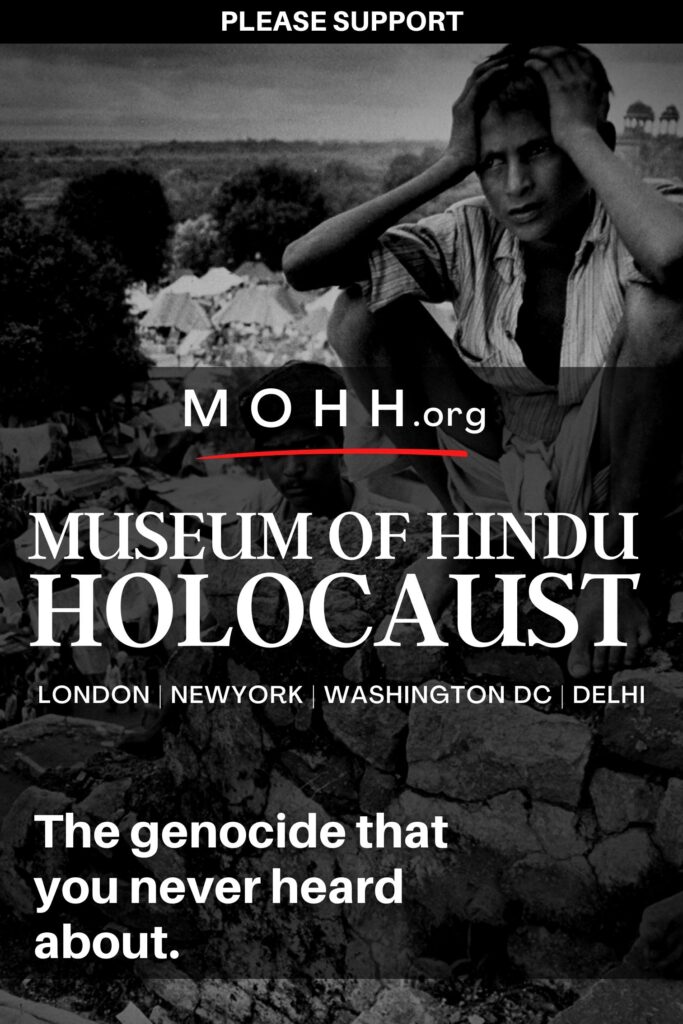[ Reported as seen ]
The 1991 Bhadrak Communal violence erupted during the Ram Navami procession in Bhadrak, Odisha, on 20th March 1991. The riot unfolded as the procession passed through the Muslim-dominated area of the town, resulting in stone-throwing, widespread looting, and arson of public properties. The Puruna Bazar and Chandan Bazar regions of Bhadrak which were Hindu dominated were particularly affected by this communal unrest.
Introduction
The Bhadrak Communal violence of 1991 cast a dark shadow over the town of Bhadrak in Odisha, India. On the fateful day of 20th March 1991, as the devout followers celebrated the auspicious occasion of Ram Navami, a communal incident marred the festivities. The riot erupted during the Ram Navami procession as it traversed through a Muslim-dominated neighborhood in Bhadrak town, leading to a spiral of violence and unrest.
The incident unfolded against the backdrop of deep-seated religious tensions and communal divisions that existed in the region. The clash occurred when the procession, filled with fervor and devotion, encountered the Muslim-dominated area, setting off a chain of events that would have far-reaching consequences. The atmosphere, once filled with anticipation and celebration, turned volatile and hostile as members from different communities found themselves pitted against each other.

The clash during the Ram Navami procession in the Muslim-dominated area became a flashpoint for violence and discord. What was meant to be a religious observance transformed into a scene of chaos and confrontation. The clash disrupted the peaceful coexistence that had prevailed in Bhadrak, leaving the town reeling from the aftermath of communal strife.
The Bhadrak Communal violence of 1991 serves as a stark reminder of the fragility of social harmony and the potential for tensions to escalate during religious processions. It underscored the need for a deeper understanding and respect among diverse religious communities to prevent such unfortunate incidents in the future. The aftermath of the riot prompted a collective introspection, with a focus on healing wounds, fostering reconciliation, and rebuilding the fractured social fabric.
As the echoes of the Bhadrak Communal violence of 1991 resonated throughout the town, it left an indelible mark on the collective consciousness of its residents. The incident served as a catalyst for dialogue, introspection, and a renewed commitment to cultivating religious tolerance and peaceful coexistence among different communities.
The scars of the Bhadrak Communal violence of 1991 continue to remind society of the importance of nurturing harmony and understanding, transcending religious differences, and embracing the spirit of unity. It serves as a solemn reminder of the need to foster an environment where diversity is celebrated, and differences are embraced, ensuring that such tragic incidents are never repeated.
The violence
The Bhadrak Communal violence of 1991 plunged the town into a dark abyss of chaos and destruction. What started as a clash during the Ram Navami procession quickly escalated into a violent eruption of stone-throwing, looting, and widespread arson, leaving a trail of devastation in its wake. The Puruna Bazar and Chandan Bazar areas of Bhadrak town bore the brunt of this communal riot, becoming the epicenter of the tumultuous events that unfolded.
As tensions soared and emotions ran high, the streets of Bhadrak became a battleground, with mobs engaging in acts of vandalism and destruction. Stone-throwing became a common occurrence as agitated individuals vented their anger and frustration. Public properties, symbols of communal harmony and shared spaces, became the targets of senseless arson, further exacerbating the turmoil.
The Puruna Bazar and Chandan Bazar areas, once bustling with vibrant activity and vibrant marketplaces, transformed into scenes of desolation and despair. Shops and establishments were ransacked, looted, and set ablaze, reducing them to mere charred remnants of their former existence. The fabric of the community was torn apart as the flames of violence consumed not only physical structures but also the trust and unity that had once bound the residents of Bhadrak together.
The impact of the Bhadrak Communal violence reverberated beyond the immediate destruction. It left an indelible scar on the hearts and minds of the people, forever altering their perception of their town and their fellow citizens. Fear and apprehension replaced the once warm and harmonious atmosphere, as communal fault lines threatened to deepen and divide the community further.

The aftermath of the riot witnessed a collective sense of grief and loss as the residents of Bhadrak grappled with the aftermath of the violence. The scars of the burnt buildings served as a haunting reminder of the dark days that unfolded during the communal riot. The shattered remnants of the Puruna Bazar and Chandan Bazar areas stood as stark reminders of the fragility of social harmony and the destructive power of communal animosity.
As the dust settled and the town began the long and arduous process of recovery, it became evident that healing the wounds inflicted by the Bhadrak Communal violence would require more than just physical reconstruction. Rebuilding the trust and mutual respect among different communities emerged as a critical aspect of the healing process. Efforts were made to foster inter-community dialogue, promote understanding, and bridge the gaps that had emerged during the tumultuous events.
The Bhadrak Communal violence of 1991 serves as a somber reminder of the consequences of unchecked hatred and intolerance. It stands as a testament to the importance of nurturing a culture of peace, acceptance, and respect for diversity. The scars left behind by this tragic event continue to inspire efforts towards building a society where communal harmony prevails and where the unity of its people triumphs over divisive forces.
Aftermath
In the wake of the Bhadrak Communal violence of 1991, a ray of hope emerged in the form of Md. Abdul Bari, a remarkable individual who played a pivotal role in restoring peace and harmony among the two communities. Recognizing his significant efforts in the aftermath of the Bhadrak riots and other instances of communal unrest in India, Md. Abdul Bari was bestowed with the prestigious National Harmony Award in 2011 by Pranab Mukherjee, the then President of India.
Md. Abdul Bari’s involvement in the healing process was instrumental in bridging the divide that had engulfed the town of Bhadrak. With unwavering determination and a deep commitment to fostering communal harmony, he initiated efforts to rebuild trust, understanding, and mutual respect among the affected communities.
His role as a peacebuilder extended beyond the boundaries of Bhadrak, as he actively engaged in promoting inter-community dialogue and reconciliation in other areas affected by communal violence. Md. Abdul Bari’s tireless efforts were driven by a vision of a united and harmonious India, where diversity is celebrated and differences are embraced as strengths.
His work in the aftermath of the Bhadrak riots served as an inspiration to others, igniting a collective desire for peace and coexistence. Md. Abdul Bari’s ability to empathize with the pain and suffering of all individuals, regardless of their religious or ethnic backgrounds, allowed him to build bridges and foster understanding among conflicting factions.

The National Harmony Award bestowed upon Md. Abdul Bari in 2011 was a testament to his remarkable contributions and the impact he had on the lives of countless individuals. It symbolized the nation’s recognition of his tireless efforts in promoting communal harmony and healing the wounds inflicted by communal violence.
Beyond the accolades and recognition, Md. Abdul Bari’s legacy continues to resonate in the hearts and minds of those he touched. His approach, rooted in empathy, compassion, and the belief in the power of dialogue, serves as a guiding light for future generations working towards building a more inclusive and harmonious society.
The aftermath of the Bhadrak riots witnessed a gradual transformation as communities began to heal and come together. The efforts led by Md. Abdul Bari and other peacebuilders paved the way for constructive dialogue, interfaith cooperation, and initiatives aimed at fostering lasting peace.
However, the journey towards complete reconciliation and social cohesion is an ongoing one. It requires sustained efforts, collective responsibility, and a commitment to upholding the principles of equality, justice, and respect for all. The story of Md. Abdul Bari’s involvement in the aftermath of the Bhadrak riots serves as a reminder of the immense power of individuals to make a positive difference, even in the face of deep-seated divisions and animosity.
As the town of Bhadrak continues to rebuild and reconcile, the legacy of Md. Abdul Bari and others like him serves as a beacon of hope and a reminder that peace is achievable, even in the most challenging circumstances. It is through the efforts of individuals committed to nurturing understanding, empathy, and unity that communities can transcend their differences and work towards a future marked by harmony and coexistence.
Conclusion
The Bhadrak Communal violence of 1991 left an indelible mark on the town and its residents, but it also showcased the resilience and determination of individuals like Md. Abdul Bari, who emerged as beacons of hope in the aftermath of tragedy. His unwavering commitment to restoring peace and harmony among the communities was recognized with the National Harmony Award, a testament to the profound impact he had on the lives of those affected by the riots.
The efforts of Md. Abdul Bari and other peacebuilders played a vital role in the healing process, fostering dialogue, understanding, and reconciliation among conflicting factions. Their tireless work bridged the divide that had engulfed Bhadrak, paving the way for a gradual transformation and the rebuilding of trust and mutual respect.
However, the journey towards complete reconciliation is an ongoing one, requiring continued dedication and collective efforts. The aftermath of the Bhadrak riots serves as a reminder of the challenges that arise from communal tensions, but also of the immense potential for individuals to make a positive difference.
The legacy of Md. Abdul Bari and his fellow peacebuilders continues to inspire future generations to strive for peace and harmony. Their approach, rooted in empathy, compassion, and dialogue, sets an example for others to follow in building inclusive and harmonious societies.
While the scars of the Bhadrak Communal violence may still remain, the stories of resilience, unity, and the pursuit of peace offer hope for a brighter future. The recognition of Md. Abdul Bari’s efforts through the National Harmony Award symbolizes the nation’s acknowledgment of the importance of fostering communal harmony and healing the wounds inflicted by violence.
As Bhadrak and its residents continue to move forward, the lessons learned from this tragic event can serve as a catalyst for change. By promoting understanding, embracing diversity, and upholding the values of equality and justice, communities can strive towards a future where such incidents of violence are replaced with compassion, tolerance, and peaceful coexistence.
The Bhadrak Communal violence of 1991 should serve as a reminder to all of us of the importance of unity and the need to stand together against hate and prejudice. It is through collective efforts, guided by the spirit of individuals like Md. Abdul Bari, that we can build a society that celebrates diversity, cherishes harmony, and ensures that such tragic events are never repeated.
CITATIONS AND SOURCES
https://en.wikipedia.org/wiki/1991_Bhadrak_riot
https://thewire.in/communalism/bhadrak-odisha-communal-tensions
https://indianexpress.com/article/india/odisha-bhadrak-communal-violence-has-taken-many-by-surprise-curfew-facebook-god-comment-hindu-muslim-4610171/


![The 1991 Bhadrak riot [Odisha, India]](https://www.projecthindukush.com/wp-content/uploads/0ff65c1c-1ba5-11e7-aa2a-1591876ff7cf-400x400.jpg)
![The 1991 Bhadrak riot [Odisha, India]](https://www.projecthindukush.com/wp-content/uploads/download-29-400x400.jpg)
![The 1991 Bhadrak riot [Odisha, India]](https://www.projecthindukush.com/wp-content/uploads/odisha75911-400x400.jpg)
![The 1991 Bhadrak riot [Odisha, India]](https://www.projecthindukush.com/wp-content/uploads/odisha-story_647_040817121653-400x400.jpg)
